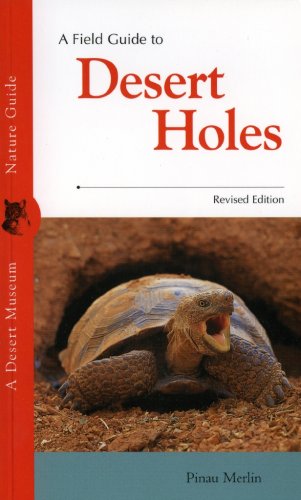Review: A Field Guide to Desert Holes by Pinau Merlin
We often walk through the world blind and ignorant, oblivious to the burgeoning life all around us—unless, of course, we take our walks with a Field Guide. A second-edition hardbound copy of Peterson's A Field Guide to Western Birds resides next to my bay window, because I want to know what that dickey-bird out there is named. My spouse says, “If it’s blue in a tree, it’s a Stellars Jay, if it’s brown on the ground, it’s a towhee.”
But I want the expert's nod to reassure me, yes, that’s a towhee.
I’ve purchased more than my share of “roadside geology” books, too. These guides combine geology and history for a locale, telling the casual tourist, "The streak of pale yellow you see on the hillside is quartz, which was mined by the Spanish as they came through the area." Of course, the tourist is looking in the wrong direction, so he confidently informs his family that the large yellow letters painted on the rocks to celebrate a local high-school graduation are “made of Spanish quartz.” (This actually happened once—I was able to gently redirect their attention to the correct hillside, telling them, "If they are, it was mined from over there.")
Now those field guides, useful as they are, can just move over on the shelf to make room for a new king. Pinau Merlin's Desert Holes guide shows you how to spot the living quarters, larders and shady retreats of desert animals. Let’s face it—in the daytime, when most of us go for a walk in the desert, these holes are the only evidence of the abundant desert life.
Like many field guides, this book uses description as the primary mode to convey the shape, size and usual location for these holes. I would have loved to see a set of color plates to illustrate holes, such as I have in my Petersen’s Guide to Rocks and Minerals. Too often, I simply couldn’t visualize the hole shape Merlin was describing. (There are some lovely ink sketches, but far too few.)
The most impressive thing about the guide is the sheer number of holes Merlin describes. Even if you read it, as I did, in the air-conditioned comfort of an urban food court, you will get the sense of life that would be hidden all around you as you stroll through a daytime desert. I even got excited to retroactively identify (from a sketch) the burrow of a spider seen in Death Valley more than two years ago.

No comments:
Post a Comment